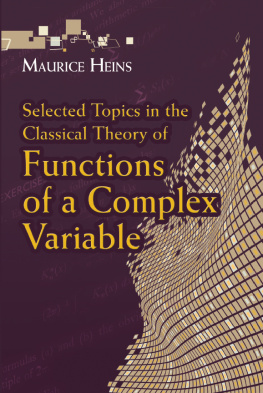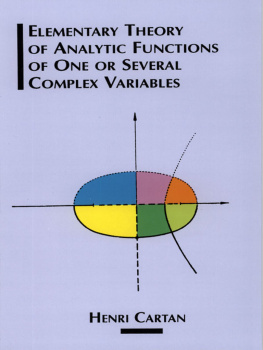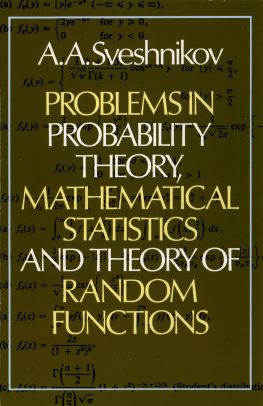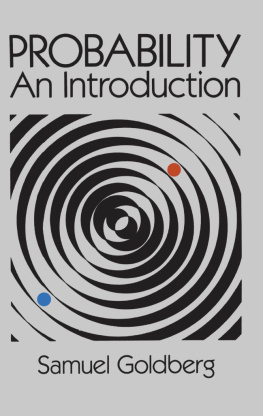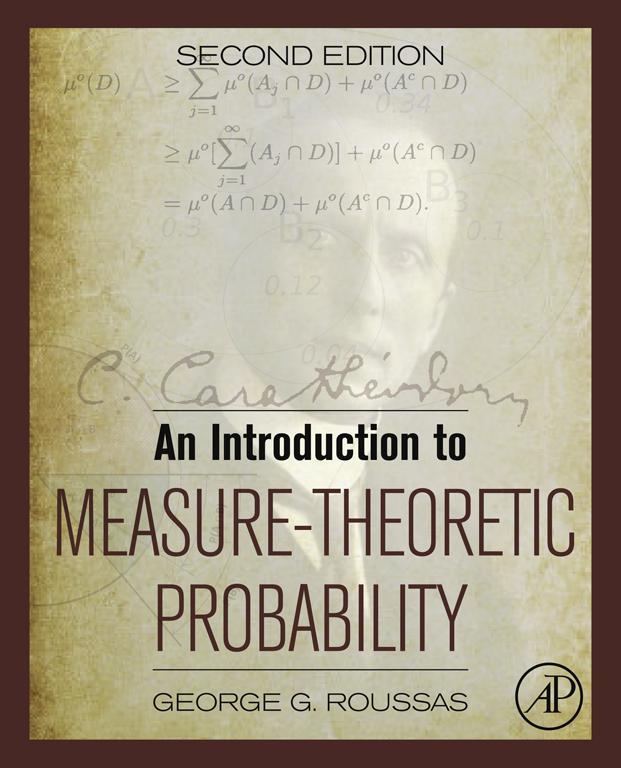List of tables
- Tables in Appendix C
List of illustrations
- Figures in Chapter 14
Landmarks
Table of Contents
An Introduction to Measure-theoretic Probability
Second Edition
by
George G. Roussas
Department of Statistics
University of California, Davis

Copyright
Academic Press is an imprint of Elsevier
The Boulevard, Langford Lane, Kidlington, Oxford OX5 1GB, UK
Radarweg 29, PO Box 211, 1000 AE Amsterdam, The Netherlands
225 Wyman Street, Waltham, MA 02451, USA
525 B Street, Suite 1800, San Diego, CA 92101-4495, USA
Second edition 2014
Copyright 2014, 2005 Elsevier Inc. All rights reserved.
No part of this publication may be reproduced, stored in a retrieval system or transmitted in any form or by any means electronic, mechanical, photocopying, recording or otherwise without the prior written permission of the publisher.
Permissions may be sought directly from Elseviers Science & Technology Rights Department in Oxford, UK: phone (+44) (0) 1865 843830; fax (+44) (0) 1865 853333; email: , and selecting Obtaining permission to use Elsevier material.
Notice
No responsibility is assumed by the publisher for any injury and/or damage to persons or property as a matter of products liability, negligence or otherwise, or from any use or operation of any methods, products, instructions or ideas contained in the material herein. Because of rapid advances in the medical sciences, in particular, independent verification of diagnoses and drug dosages should be made.
Library of Congress Cataloging-in-Publication Data
Application submitted
British Library Cataloguing in Publication Data
A catalogue record for this book is available from the British Library
For information on all Academic Press publications visit our web site at store.elsevier.com
Printed and bound in USA
14 15 16 17 18 10 9 8 7 6 5 4 3 2 1
ISBN: 978-0-12-800042-7

Dedication
This book is dedicated to the memory of Edward W. Barankin, the probabilist, mathematical statistician, classical scholar, and philosopher, for his role in stimulating my interest in probability with emphasis on detail and rigor.
Also, to my dearest sisters, who provided material means in my needy student years, and unrelenting moral support throughout my career.
Pictured on the Cover
Carathodory, Constantine (18731950)
He was born in Berlin to Greek parents and grew up in Brussels, Belgium. In high school, he twice won a prize as the best Mathematics student in Belgium. He studied Military Engineering in Belgium, and pursued graduate studies in Gttingen under the supervision of Hermann Minkowski.
He is known for his contributions to the theory of functions, the calculus of variations, and measure theory. His name is identified with the theory of outer measure, an application of which in measure theory is the so-called Carathodory Extension Theorem. Also, he did work on the foundations of thermodynamics, and in 1909, he published the first axiomatic rigid foundation of thermodynamics, which was acclaimed by Max Planck and Max Born.
From correspondence between Albert Einstein and Constantine Carathodory, it may be deduced that Carathodorys work helped Einstein in shaping some of his theories.
In 1924, he was appointed professor of Mathematics at the University of Munich, where he stayed until his death in 1950.
Preface to First Edition
This book in measure-theoretic probability has resulted from classroom lecture notes that this author has developed over a number of years, by teaching such a course at both the University of Wisconsin, Madison, and the University of California, Davis. The audience consisted of graduate students primarily in statistics and mathematics. There were always some students from engineering departments, and a handful of students from other disciplines such as economics.
The book is not a comprehensive treatment of probability, nor is it meant to be one. Rather, it is an excursion in measure-theoretic probability with the objective of introducing the student to the basic tools in measure theory and probability as they are commonly used in statistics, mathematics, and other areas employing this kind of moderately advanced mathematical machinery. Furthermore, it must be emphasized that the approach adopted here is entirely classical. Thus, characteristic functions are a tool employed extensively; no use of martingale or empirical process techniques is made anywhere.
The book does not commence with probabilistic concepts, and there is a good reason for it. As many of those engaged in teaching advanced probability and statistical theory know, very few students, if any, have been exposed to a measure theory course prior to attempting a course in advanced probability. This has been invariably the experience of this author throughout the years. This very fact necessitates the study of the basic measure-theoretic concepts and resultsin particular, the study of those concepts and results that apply immediately to probability, and also in the form and shape they are used in probability.
On the basis of such considerations, the framework of the material to be dealt with is therefore determined. It consists of a brief introduction to measure theory, and then the discussion of those probability results that constitute the backbone of the subject matter. There is minimal flexibility allowed, and that is exploited in the form of the final chapter of the book. From many interesting and important candidate topics, this author has chosen to present a brief discussion of some basic concepts and results of ergodic theory.
From the very outset, there is one point that must be abundantly clarified, and that is the fact that everything is discussed in great detail with all proofs included; no room is allowed for summary unproven statements. This approach has at least two side benefits, as this author sees them. One is that students have at their disposal a comprehensive and detailed proof of what are often deep theorems. Second, the instructor may skip the reproduction of such proofs by assigning their study to students.
In the experience of this author, there are no topics in this book which can be omitted, except perhaps for the final chapter. With this in mind, the material can be taught in two quarters, and perhaps even in one semester with appropriate calibration of the rate of presentation, and the omission of proofs of judiciously selected theorems. With all details presented, one can also cover an entire year of instruction, perhaps with some supplementation.
Most chapters are supplied with examples, and all chapters are concluded with a varying number of exercises. An unusual feature here is that an Answers Manual of all exercises will be made available to those instructors who adopt the book as the textbook in their course. Furthermore, an overview of each one of the 15 chapters is included in an appendix to the main body of the book. It is believed that the reader will benefit significantly by reviewing the overview of a chapter before the material in the chapter itself is discussed.


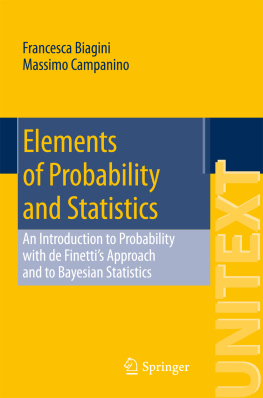
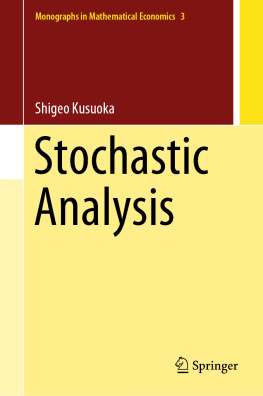
![Eisner Tanja - Operator Theoretic Aspects of Ergodic Theory [recurso electrónico] $c](/uploads/posts/book/173124/thumbs/eisner-tanja-operator-theoretic-aspects-of.jpg)
